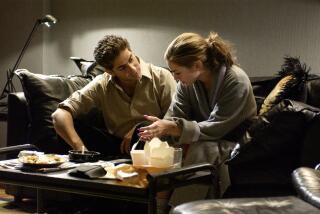Troiani Murder Trial Handed Over to Jury
- Share via
The Laura Troiani murder trial was turned over to the jury late Monday afternoon after closing arguments in which the defense characterized her as swept up in the lethal thrill-seeking of five Marines, and the prosecution said she was the manipulative ring leader of a carefully contrived plot to kill her husband in an ambush.
Defense attorney Geraldine Russell argued before the jury that Troiani, now 26, could hardly be characterized as the brains behind the operation because she did such a poor job of covering her tracks after the Aug. 10, 1984, slaying that left her husband of five years, Carlo Troiani, dead from gunshots wounds to his back and head.
Rather, Russell said, Troiani was “a sad, young girl,” too depressed and melancholic to realize that the five Marine co-defendants were going to act on what was only her fantasy and actually kill her husband, and was then too emotionally weak to stop the plot.
“They decided what to do, when and where to do it, not Laura Troiani,” Russell said. “They did not ask or her seek her permission. They manipulated Laura Troiani for their own kicks and thrills.
“You’re asked (by the prosecution) to believe that a group of Marines who wouldn’t follow the orders of their own company would follow the orders of Laura Troiani. That doesn’t make sense,” Russell said.
‘Passions Were High’
She said the five men were closely bonded, wanted to prove their bravado, and that their “passions were high--like a fraternity running out of control on a Saturday night. It was her misfortune to run into that group.”
The fact that Laura Troiani openly purchased bullets for the .357-Magnum used to shoot her husband, did not try to cover her tire tracks at the murder scene and ultimately shared the essence of the plot with homicide detectives 12 hours later “betrays the actions of someone who did not think it out beforehand,” Russell said. She noted that deliberation of murder is one of the four criteria necessary for a finding of first-degree murder.
In a stinging and passionate rebuttal, prosecutor Paul Pfingst said in his closing arguments that only one witness--a psychiatrist hired by the defense--said that Troiani was severely depressed and melancholic at the time of the killing and thus was too enveloped in an emotional and mental fog to have plotted the killing.
Yet, a score of prosecution witnesses, including friends and neighbors who saw her daily, and a neurologist and a psychologist who were both seeing her regularly in the weeks prior to the killing, said Troiani did not appear at all depressed, Pfingst said.
“They have all painted a consistent picture . . . like a beacon in the night,” that Laura was “a cold, hard, manipulative person.” Their testimony should be believed over the word of a single psychiatrist hired by the defense to testify about Laura Troiani’s state of mind 2 1/2 years after the fact, he said.
Pfingst also reminded jurors of witnesses who testified that Troiani began plotting her husband’s murder several months before she happened across the five co-defendants who allegedly obliged her.
Once she found them, “she was with people she felt comfortable with. They shared values. To go out and kill was no big deal. They played together well, and they killed together well,” Pfingst said.
He said sarcastically that if Troiani was indeed depressed in August, 1984, she fooled not only professionals but herself as well. He quoted her in a police interrogation as saying, “I was having a ball, being married and fooling around.” Pfingst added sardonically, “Not even Laura Troiani realized how depressed she was.”
Chance to Stop Plot Cited
Time and time again, Troiani had opportunities to stop the murder plot, but she helped carry it out right to the last moment when she tapped her brake lights, alerting the alleged triggerman, Mark Schulz, that Carlo Troiani was standing where he could be shot from behind, Pfingst said.
“There can be no doubt that Carlo Troiani was killed because Laura Troiani wanted him killed,” Pfingst said. “She provided the motive--life insurance proceeds--and the material--the bullets. She went on a hunt, on a search, for the people who would help her do the job.”
Superior Court Judge Gilbert Nares spent more than two hours reading the jury 104 pages of technical instructions and explaining the possible verdicts, ranging from acquittal to finding her guilty of first-degree murder with special circumstances--which would qualify her for the death penalty--to accessory to murder.
More to Read
Sign up for Essential California
The most important California stories and recommendations in your inbox every morning.
You may occasionally receive promotional content from the Los Angeles Times.













